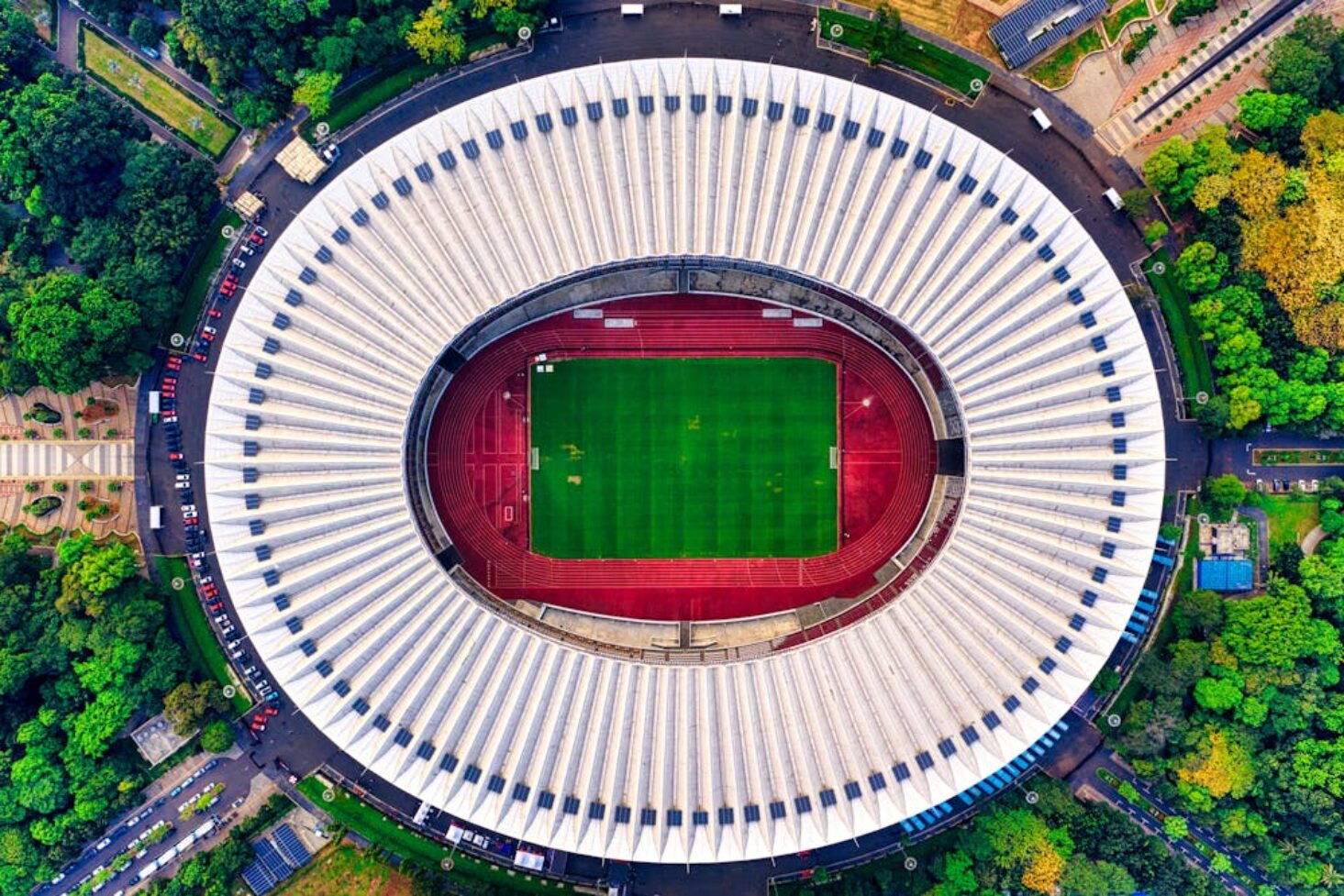
How Are Cricket Stadiums Different Around The World
Cricket stadiums around the world vary in terms of history, architecture, capacity, climate considerations, features, facilities, and cultural influences. These differences create a unique experience for cricket fans and players alike. Understanding the distinct characteristics of cricket stadiums can provide insights into the sport’s global appeal and cultural significance.
To begin, a historical background of cricket stadiums delves into the evolution of these venues and their significance in the sport’s heritage. The architectural differences of cricket stadiums highlight the varying designs and structures, with traditional stadiums reflecting cultural aesthetics, while modern stadiums embrace innovative concepts.
Capacity and size variations in cricket stadiums showcase the diverse seating arrangements and the ability to accommodate large crowds. Furthermore, climate considerations play a crucial role in stadium design, with some stadiums adapted to different weather conditions and equipped with facilities to ensure player and spectator comfort.
Features and facilities of cricket stadiums encompass essential aspects like pitch and outfield conditions, seating arrangements, media and broadcasting facilities, food and beverage options, as well as player and spectator amenities. These elements contribute to the overall experience and enjoyment of attending matches.
Cultural influences on cricket stadiums shed light on how the sport is embraced and celebrated in different regions, resulting in unique stadium designs and traditions. Lastly, exploring iconic cricket stadiums around the world showcases the most revered and historically significant venues that have witnessed legendary cricket matches and left an indelible mark on the sport’s history.
By understanding the distinct characteristics and differences of cricket stadiums, cricket enthusiasts gain a deeper appreciation and insight into the world of cricket, its global reach, and the cultural significance it holds for millions of fans worldwide.
Historical Background of Cricket Stadiums
Cricket stadiums have a rich historical background that dates back to the 18th century. The first cricket ground, Hambledon Club, was established in England in 1750. It paved the way for the development of modern stadiums, like Lord’s Cricket Ground, which opened in 1814.
The historical background of these stadiums has played a significant role in the growth of cricket as a sport. Moreover, their contribution to hosting iconic matches throughout the years adds to their historical significance.
One such iconic match was the “Tied Test” between Australia and West Indies at the Melbourne Cricket Ground in 1960, which captivated cricket fans worldwide.
Architectural Differences of Cricket Stadiums
Cricket stadiums are more than just sporting arenas; they are architectural marvels that reflect the spirit of the game. In this section, we will discover the fascinating world of cricket stadium designs.
From the traditional stadiums that echo the sport’s rich history to the modern architectural wonders, we’ll explore the diverse structures that host countless epic battles.
Get ready to be amazed by the capacity and size variations that exist among these remarkable stadiums, each with its own unique character.
Traditional Cricket Stadiums
Traditional cricket stadiums hold a special place in the hearts of cricket fans worldwide. These iconic venues are characterized by several key features.
Firstly, they often showcase classic architectural elements that reflect the cultural heritage of the host country.
Secondly, traditional stadiums provide an immersive experience for spectators with intimate seating arrangements and close proximity to the pitch. Moreover, many of these stadiums have a test match legacy, having hosted historic games that contribute to their allure.
Additionally, these venues feature traditional pavilions and dressing rooms where players gather and prepare for the game. Lastly, the picturesque gardens and landscapes surrounding traditional stadiums offer a serene backdrop for the matches.
To learn more about how cricket stadiums differ around the world, check out this article on Bleacher Report.
Modern Cricket Stadiums
Modern cricket stadiums have undergone significant advancements in design and facilities to enhance the overall spectator experience. Here is a breakdown of the key features found in modern cricket stadiums:
- Multi-purpose design: Modern cricket stadiums are often designed to host various events, such as concerts and other sporting competitions, making them versatile and maximizing their usage.
- State-of-the-art technology: From advanced lighting systems to high-definition screens, modern cricket stadiums have incorporated cutting-edge technology to provide spectators with a captivating visual experience.
- Comfortable seating arrangements: Modern stadiums prioritize spectator comfort, offering ergonomic seats with ample legroom and unobstructed views of the playing field.
- Modern amenities: These stadiums boast modern amenities, including spacious concourses, clean restrooms, and a wide selection of food and beverage options.
- Enhanced player facilities: Modern stadiums provide state-of-the-art training facilities, locker rooms, and medical centers to cater to the needs of professional cricket players.
These advancements in modern cricket stadiums have revolutionized the way matches are watched and experienced. The incorporation of technology and improved facilities has raised the bar for spectator comfort and engagement.
The future of cricket stadiums is likely to witness even more innovations as venues strive to deliver unforgettable experiences to fans.
Capacity and Size Variation in Cricket Stadiums
Different cricket stadiums around the world vary greatly in their capacity and size, offering unique experiences for players and spectators alike. Here is a comparison of some notable cricket stadiums:
| Stadium Name | Location | Capacity | Size (in acres) |
|---|---|---|---|
| Melbourne Cricket Ground | Melbourne, Australia | 100,024 | 20.76 |
| Lord’s Cricket Ground | London, England | 30,000 | 8.12 |
| Eden Gardens | Kolkata, India | 66,349 | 16.45 |
| Lahore Gaddafi Stadium | Lahore, Pakistan | 27,000 | 25 |
| Wanderers Stadium | Johannesburg, South Africa | 34,000 | 11.97 |
These variations in capacity and size allow cricket fans around the world to experience the game in a range of settings, from small and intimate stadiums to large and grand ones. When choosing a cricket stadium to visit, consider factors such as the atmosphere and the level of excitement you desire.
Whether it’s the historic Lord’s or the massive Melbourne Cricket Ground, every stadium offers a unique cricket experience.
Different cricket stadiums around the world offer unique experiences for players and spectators due to the capacity and size variations. Check out the following notable cricket stadiums for their capacity and size variations:
| Stadium Name | Location | Capacity | Size (in acres) |
|---|---|---|---|
| Melbourne Cricket Ground | Melbourne, Australia | 100,024 | 20.76 |
| Lord’s Cricket Ground | London, England | 30,000 | 8.12 |
| Eden Gardens | Kolkata, India | 66,349 | 16.45 |
| Lahore Gaddafi Stadium | Lahore, Pakistan | 27,000 | 25 |
| Wanderers Stadium | Johannesburg, South Africa | 34,000 | 11.97 |
The range of capacity and size in cricket stadiums worldwide provides diverse settings for cricket fans to enjoy the game. You can choose from small and intimate stadiums to large and grand ones based on the atmosphere and level of excitement you desire. Whether it’s the historic Lord’s or the massive Melbourne Cricket Ground, each stadium offers a unique cricket experience.
Climate Considerations for Cricket Stadiums

When it comes to cricket stadiums, climate considerations are crucial. The weather conditions in a specific region can have a significant impact on the game and the overall experience for players and spectators.
Climate considerations for cricket stadiums include proper ventilation and cooling systems in hot and humid climates to ensure the comfort of everyone involved. Similarly, stadiums in colder climates may require heating systems and infrastructure to deal with inclement weather.
Additionally, stadiums located in areas prone to heavy rainfall need proper drainage systems to prevent waterlogging and ensure uninterrupted gameplay.
Considering climate is essential in the design and maintenance of cricket stadiums worldwide.
Features and Facilities of Cricket Stadiums
Cricket stadiums come alive with a vibrant mix of features and facilities, each playing a pivotal role in enhancing the overall experience.
Get ready to explore the world of cricket stadiums, where the pitch and outfield conditions dictate gameplay, seating arrangements cater to every spectator’s comfort, media and broadcasting facilities bring the action to millions, food and beverage options tantalize taste buds, and player and spectator amenities ensure a seamless experience.
Discover the dynamic and captivating world that lies within the boundaries of these magnificent arenas.
Pitch and Outfield Conditions
The pitch and outfield conditions are vital elements in the game of cricket. When assessing the conditions, several factors need to be considered:
- Soil Type: Different pitches implement various types of soil, including clay or loam. These soil types greatly affect the bounce and pace of the ball.
- Grass Length: The length of the grass on the pitch directly impacts the movement and spin of the ball.
- Weather Conditions: The weather also plays a significant role. Rain can make the pitch damp, hindering the ball’s bounce. On the other hand, hot and dry weather can cause the pitch to crack, assisting spin bowlers.
- Outfield Surface: The state of the outfield has a direct influence on fielding and the speed of the ball.
- Pitch Preparation: The ground staff meticulously prepares the pitch to optimize playing conditions. This includes rolling, watering, and covering the pitch overnight.
Seating Arrangements
When it comes to seating arrangements in cricket stadiums, there are a variety of factors to take into consideration for a comfortable and pleasurable experience for spectators.
Cricket stadiums generally have different seating zones, including general stands, premium seating areas, and corporate boxes, catering to various preferences and budgets. The layout of the stadium plays a crucial role in creating a comfortable seating arrangement.
Furthermore, the capacity of the stadium and the number of available seats determine the crowd capacity and significantly impact the atmosphere during matches. To ensure optimal viewing, good stadium design prioritizes unobstructed sightlines of the playing field from every seat.
Amenities such as restrooms, food and beverage options, and easy access to exits also contribute to enhancing the overall experience.
For the ultimate seating arrangements, it is recommended to choose stadiums that prioritize spectator comfort, offer clear views of the game, and provide convenient amenities to make their time at the stadium truly enjoyable.
Media and Broadcasting Facilities
edia and broadcasting facilities are crucial components of modern cricket stadiums, providing a platform for fans worldwide to enjoy the game.
These facilities, which include state-of-the-art commentary boxes and press rooms at The Oval in London and Eden Gardens in Kolkata, TV production facilities at MCG in Melbourne and Lord’s in London, high-quality cameras and video screens for replays at Adelaide Oval and Wankhede Stadium in Mumbai, as well as premium audio systems for clear broadcasting at Dubai International Cricket Stadium and Sydney Cricket Ground, enhance the viewing experience for spectators and ensure that cricket matches are broadcasted seamlessly to fans around the world.
Food and Beverage Options
When attending a cricket match, spectators can enjoy a variety of food and beverage options to enhance their experience.
- Food Options: Hot dogs, Pizza slices, Burgers, Nachos, Indian street food.
- Beverage Options: Soft drinks, Beer, Wine, Cocktails, Non-alcoholic mocktails.
Cricket stadiums strive to provide a diverse range of food and beverage options to cater to different tastes and preferences. By offering a variety of choices, spectators can enjoy their favorite snacks while cheering for their favorite teams.
Player and Spectator Amenities
Cricket stadiums around the world provide a wide range of amenities to enhance both players’ and spectators’ experience and comfort.
- Player Amenities: Modern stadiums go above and beyond to cater to the needs of players by offering state-of-the-art dressing rooms, well-equipped gymnasiums, and top-notch practice facilities. These amenities allow players to effectively prepare and recover.
- Spectator Amenities: In order to ensure the utmost comfort for spectators, stadiums provide comfortable seating arrangements. These arrangements include individual seats with backrests and ample legroom. Additionally, there are various food and beverage options available throughout the match to keep spectators refreshed.
- Restrooms and Facilities: To ensure convenience for both players and spectators, cricket stadiums offer adequate restroom facilities and washrooms. Furthermore, these stadiums are equipped with medical facilities and first aid centers to promptly address any medical emergencies.
- Accessibility: Accessibility is a top priority for cricket stadiums. They provide ramps, elevators, and designated spaces for individuals with disabilities, ensuring easy access for all. These stadiums also offer designated parking areas and transportation services to further facilitate accessibility.
- Entertainment Areas: Many cricket stadiums feature entertainment areas equipped with large screens where spectators can enjoy replays and highlights of the match. These areas often include family-friendly activities, guaranteeing an enjoyable experience for everyone.
Cultural Influences on Cricket Stadiums
Cricket stadiums around the world are shaped by the cultural influences of the regions they are located in. These cultural influences play a significant role in shaping the unique characteristics of cricket stadiums.
Cultural influences can be seen in the design, architecture, and atmosphere of the stadiums. These influences create a more immersive atmosphere and showcase the diversity of the region.
For example, Indian stadiums are known for their vibrant and energetic atmosphere, with fans singing and dancing throughout the matches.
This lively atmosphere is a result of the cultural influences on the stadium. Similarly, stadiums in England exude a sense of tradition and history, with Victorian-era architecture and well-manicured grounds. These architectural choices reflect the cultural heritage of the region.
In Australia, stadiums have a more relaxed and laid-back atmosphere, reflecting the country’s outdoor lifestyle. This influence can be seen in the design and atmosphere of the stadiums.
In addition to incorporating cultural influences into the stadium experience, it is important to promote local talent and culture. Traditional music or dance performances can be featured during breaks in the game, allowing fans to experience the local culture firsthand.
Facilities that cater to the specific needs and preferences of the local community should also be provided. For example, prayer rooms or family-friendly areas can be included to accommodate the diverse needs of the fans.
Collaborating with local artists to create artwork or installations that celebrate the region’s cultural heritage is another way to incorporate cultural influences into the stadium.
The stadium can also be used as a platform for promoting social causes and raising awareness about important issues within the community. By doing so, the stadium fosters a sense of inclusivity and diversity, creating a welcoming environment for fans of all backgrounds and nationalities.
Cultural influences on cricket stadiums are what make them unique and special, and incorporating these influences enhances the overall experience for everyone involved.
Iconic Cricket Stadiums Around the World
- Lord’s Cricket Ground, London: Known as the “Home of Cricket,” Lord’s is steeped in tradition and hosts prestigious matches.
- Melbourne Cricket Ground, Melbourne: With a capacity of over 100,000, it is the largest cricket stadium globally and has witnessed many historic matches.
- Eden Gardens, Kolkata: Located in India, this stadium has a passionate cricket-loving crowd and a rich history of memorable matches.
- Wankhede Stadium, Mumbai: Known for its electrifying atmosphere, this stadium has hosted numerous thrilling matches, including the 2011 Cricket World Cup final.
Visiting these Iconic Cricket Stadiums Around the World offers an unparalleled experience for fans, immersing them in the history and excitement of the game. Whether it’s witnessing a historic match at Lord’s or soaking in the electric atmosphere at Wankhede, these stadiums are a must-visit for cricket enthusiasts.
Frequently Asked Questions
How are cricket stadiums different around the world?
Cricket stadiums differ around the world in terms of their atmosphere, history, and aesthetics. Each venue has its own unique characteristics and features that make it special.
What factors are considered when ranking cricket grounds?
When ranking cricket grounds, factors such as atmosphere, history, and aesthetics are taken into account. The allocation of points for each category helps determine the overall ranking of the venue.
Can you provide examples of cricket stadiums with distinct features?
Yes, there are many cricket stadiums with distinct features. For example, Lord’s Cricket Ground in London, United Kingdom, is known as the ‘home of cricket’ and has a Victorian pavilion and green grounds. Kensington Oval in Bridgetown, Barbados, has a vibrant atmosphere and a statue of Sir Garfield Sobers.
Are there any unusual characteristics in cricket field shapes?
Yes, cricket fields can have irregular shapes. Some stadiums have curved boundaries, elongated ovals, or even fixed dimensions. These unique shapes add to the challenge and excitement of the game.
What is the significance of the Ashes in cricket history?
The Ashes is a historic cricket series between England and Australia. The Oval in London, United Kingdom, is considered the birthplace of the Ashes, as it hosted a match in 1882 that led to the creation of the Ashes urn.
Which cricket ground is known as the ‘home of cricket‘?
Lord’s Cricket Ground in London, United Kingdom, is known as the ‘home of cricket‘. It is the most famous cricket ground in the world and has a rich history, having hosted over 100 Test matches.





